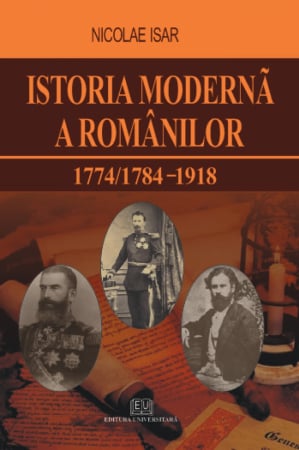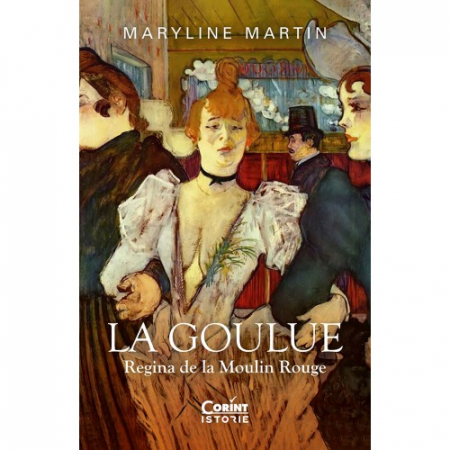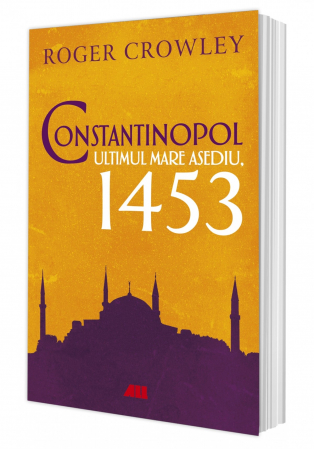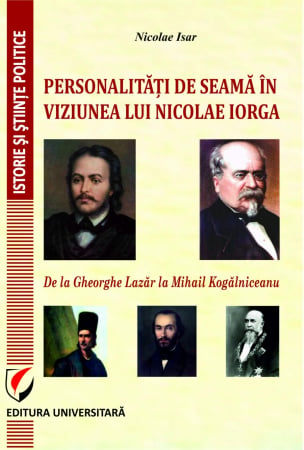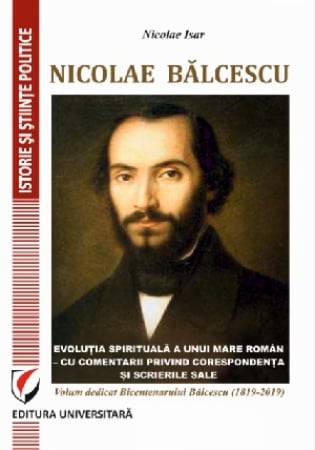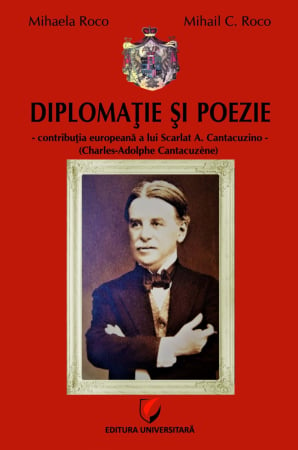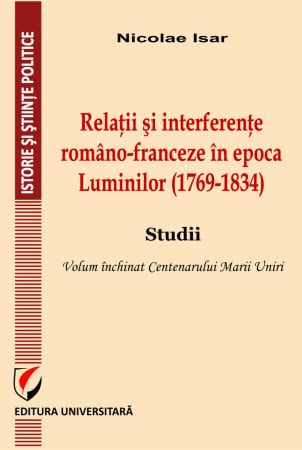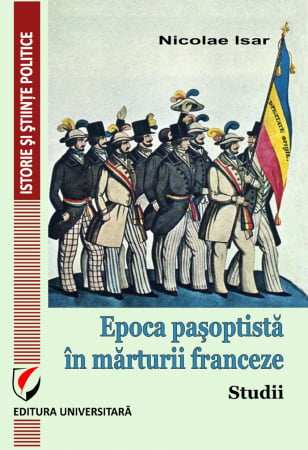ISBN: 978-973-749-049-0
Publisher year: 2006
Edition: I
Pages: 272
Publisher: Editura Universitară
Author: Nicolae Isar
- Description
- Download (1)
- Authors
- Reviews (0)
Professor Nicolae Isar crosses for decades often intricate roads of national history, dealing with predilection for the first half and middle of the nineteenth century. It's an excellent knowledge of the period and a tireless researcher of archives. His research is based on a broad reading of the time Edite sources, but always and unpublished sources. This volume not only confirms the seriousness and not infrequently its scientific novelty approach. between its pages contained a total of 11 studies that its author has gathered, this time in a joint directly or indirectly related to the revolution of 1848. Reading volume helps us to understand what it meant forty-eighters world, this generation of devotion to country, which has contributed so greatly to the formation of modern Romania.
Nicolae Isar offers a series of chapters of a test period of decisive significance in the destiny of the Romanian nation. Personagiile which enliven the pages of the book appear to us, some of them in a new light, while others become more understandable in light of the details provided to us by the author of the book. Call the weather is good correspondence to reveal, sometimes in detail, which increases interest in reading, the behavior of the resurrection scenes huge Romanian actors. Not missing a Balcescu and CA Rosetti and also Scarlat Heliade and Barnabas, but how we appear and Christof interesting and correspondence Iscovescu disclosed seemingly minor players, but having it and her undoubted significance.
A characteristic feature of union that is a generation raised to the national cause passionate dedication, but also social, which he served. Everyone is considered mobilized into action to build a new society and a new state. The cause is furnished for all their actions do not give way to sacrifice. Neither walk after they have settled and also to the country than debt obsession. What model for the times that followed and today! There are also agents of the nation who strive to transfer to the West in general and to their interlocutors image of their country, contributing - so weak material means at their disposal-the progressive knowledge of the Romanian problem and its solution. Isar teacher book reader contributes to reveal springs of 2006 and 1848 generation and motivations, especially insofar as it actually contributed to what was to be Romania.
Volume revealed a feature of these forty-eighters during their exile, this time negative, that tensions and conflicts between them, both harmful and damaging to the cause which they served. the center of these controversies are Heliade doubt, so much in his cultural and so small in his behavior towards other leaders of the revolution. Function of denigrating his memoirs, which he tried to distort the image of radical leaders of the revolution, even ADXenopol falling at a time, under the influence of this writing, and location of a position Heliade antiunionistă objective, the ardent year 1856, reflected and "dispute" to the great French Saint-Marc Girardin publicist, is telling in this regard. The author helps us in this behavior to better understand the conflicting personalities.
The volume also contains two studies that seemingly come out of its chronological limits, but in fact complement paşoptismului happy image, which continued to be present in the Romanian society decades after the revolution. It is the practice of Rosetti, forty-eighters model as Minister of Public Instruction in 1866 and also the vision of Mihai Eminescu in 1876-1883 on the forty-eighters MK. The two studies contribute, no doubt, also to understand the scale or effects paşoptismului in the second half of the nineteenth century.
Professor Nicolae deserves all praise for effort Isar to, but especially to the extent that internal spring has become the knower of this extraordinary generation and our ability to transmit, relevant and balanced picture of these builders of modern Romania.
Dan Berindei, Acad
Bucharest, March 5, 2006
* * *
This book, as its title indicates, is dedicated to the illustrious generation of 1848, which, over time, specialized historical literature, but also in the Romanian public spirit, he deserved status of a "golden generation".
It was a generation of Romanian patriots - historians, writers, school, church, men of culture, in general, which were involved in one way or another, in preparing and carrying out the revolution of 1848, which contributed then, the struggle and their sacrifices, building and strengthening the modern Romanian state.
Gave the strongest expression of it, without doubt, the leaders of the revolution of 1848 of the Romanian territory, its history outside of their contribution is unthinkable.
Among this generation include not only leaders but known, on which historical literature insisted especially because, as is known, the revolution has hired the entire Romanian society, in addition to the army, being involved, roles, two other institutions, church and school. So we place among the "people from '48 'many clergy, headed by senior bishops, many people from school, especially the Romanian Country, teachers noted the National College" St. Sava ".
With the contribution of the profession, namely, the institutions of the latter, of course, talking about the role that was played in the events, on the one hand, religion and traditional religious spirit, on the other, education and instruction which have passed, inevitably, on the level of intellectual and moral behavior of leaders.
As you know, dramatic has happened leaders, after suppression of the revolution by foreign armed intervention. In contrast, fruntaţii Wallachian revolutionaries continued their struggle in exile: Balcescu, CA Rosetti, brothers I. and D. Bratianu Ghica, I. Heliade Radulescu, Goleştii and others, some less known have lived in exile drama, making desperate efforts not only to survive but also to promote the aspirations of the Romanian people in the West.
Should be noted that during his exile, despite the dramatic aspect of daily life, in conjunction with continued revolutionary struggle, but also with the analysis of 1848 events were outlined various ideas and concepts better personalities and work of exile journalism clearly outlining their spiritual profile generation.
As drawn from our study on the Romanian revolutionaries in exile activity in this period were better define their thinking big in the current time, nationalism and liberalism. The materials collaboration collective publications - "Romania future", "Romanian Junimea", "Romanian Republic" - but also in individual works, their advocacy emerged to assert national community characteristics and aspirations expressed by Balcescu especially in formula "to become a nation," said the study's broad Bratianu, Nationality.
In close connection with the requirements of the revolutionary struggle, he said condemning the attitude of Romanian exiles absolutist regimes, solidarity with national liberation struggle of other peoples oppressed.
In this context, especially noted the attitude of condemnation of Russian protectorate, as the main obstacle to the development of the Romanian nation (according to well-known appreciation of Balcescu with ample demonstration of CA Rosetti made in his work, Russia).
The liberal line through their writings during his exile, the leaders of 1848 states that supporters of civil liberties, but of equal opportunities in political economic and social categories. Continued and were completed in this period Balcescu's concerns, and other leaders of 1848 (eg, Al. Golescu) on the agrarian problem and the need for empowerment of the peasantry.
On the other hand, the reception line traditionally Christian spirit - as he manifested in the events of 1848 - in time exile were deepened links with social doctrines of the Christian West and nature but their promoters (see, first the case of I. Heliade Radulescu).
Finally, categorical affirmation belongs to this time the revolutionary goal of national unity, their option to collect links on both sides of the Carpathians, to develop a joint program of action for building the national state.
As results from our article reproduced in this paper, the synthesis of these concerns is seen especially in Balcescu on line its previous concerns, he amplifying and analysis, giving a more precise outline of his hypostasis goal promoter of national unity.
If Balcescu's tragic disappearance in November 1852, the disappearance of several other exiles in the coming years, they shrink the ranks of exiles, of most of them have been given since the end of exile, to return home and participate, with important roles in the union of the Principalities, and thereafter carrying out reforms during the reign of Al. I. Cuza. They were given, then some of them to contribute in the seventh and eighth decades, the assertion of constitutional monarchy regime and to gain full independence of the Romanian state.
At this stage of historical development, among others, were to be noted that Rosetti and Kogalniceanu, two of the representatives of forty-eighters generation covered by our studies. In general, the Romanian political life, corresponding to the first decades of the reign of Charles I, continued to evolve, largely under the sign of the importance of people in 1848. Not only political, but cultural evolution in these decades has benefited the important contribution of the 1848 figures. As shown, a few years ago, in a remarkable speech reception at the Romanian Academy - significantly titled Generation forty-eighters - among the founders of the Literary Society in 1866, which will be the next vase Romanian Academy, one third of them were forty-eighters.
* * *
As can be seen, the present study grouped some of our studies on the subject of analysis of some aspects of the Romanian revolution of 1848 and the exile that followed, orecum and important aspects of thinking and the generation of forty-eighters figures, some of the most important, and Balcescu, I. Heliade Radulescu, CA Rosetti or Kogalniceanu, other figures in the background of events, such as Scarlat (Sofronie) Barnabas, Barbu Iscovescu painter, revolutionary officer. Christof etc.
Undoubtedly, as can be seen, most of these studies concerns the nature of documentation and contributions, with other, more general, our generation image completion in 1848 and her role important in Romanian history.
Among other things, for example, referring to the patriot testament Scarlat (Sofronie) Barnabas, that he leaves his entire fortune Romanian Library and Chapel in Paris, and his other donations made during life seemed interesting to note that his spirit of sacrifice, on behalf of the country, was not singular in time, but he focused on other contemporaries of his, Otherwise the descendants of the old Romanian aristocracy.
As the data provided to us by Major revolutionary massive correspondence. Christof, they throw, we believe, new light on post-forty-eighters exile on daily life and personality of Romanian exiles, known or less known figures. Among others, they reconstruct the dramatic end of the painter in exile Iscovescu Barbu, we refer to a separate study.
The bands of the same treasure documentary - Al's correspondence. Christof - but also data that we provide other types of documents or publishing time throws new light on his personality Heliade I. Radulescu, the controversy of exile in relation to the work and ideas.
As our studies concerning Rosetti and Kogalniceanu, they suggest, we believe, a historical picture of the fate of these figures, and by generalization, the fate of other personalities, belonging to forty-eighters generation. On CA Rosetti catch him in a paradoxical situation, one of the major conspirators helped Prince Al removal. I. Cuza, the government in 1866, which forced abdication of Prince succeeding Union, he serves as Minister of Religious Affairs and Public Instruction, or as such, despite the start-up and formal declarations against the former rulers, we see acting for Cuza's reform further, in education, on behalf of ideas from 1848, promoting other initiatives (among other things, the establishment Literary Society, the above-mentioned).
Finally, in terms of activity Kogalniceanu in the Independence War era, it is particularly significant for the historical destiny of the generation of 1848, he was not given to fully contribute, along with other former leaders of the 1848, achieving a major goal of this generation - Independence.
As the article indicates that our work is concluded, the political-diplomatic Kogalniceanu views is analyzed in terms of Mihail Eminescu, if this analysis is interesting as the national poet, as is known, formidable opponent of liberal government in 1877 in which had been part Kogalniceanu, while critical of arrows directed against leaders destructive radicals, Bratianu and CA Rosetti, the Moldovan patriot to exempt from this criticism, presenting it positive, motivating them and acknowledging attitudes and qualities great statesman.
Disparate originally appeared in different magazines, the content of this work are studies, once close together, we have found, objectively, to have links between them, and grouping under the title of this book, Revolution - Exile - historical destiny, we were forced by itself.
Of course, the reader will remain the correctness of this group, in which concerns us, we persist in believing that in any case as a whole, these studies, making as many chapters of this paper, bringing considerable new data on the illustrious generation of 1848, covering a range of lesser-known aspects of the revolution of 1848 and subsequent activity of its leaders, and the work or ideas of NPH little known figures.
In general, the work noastraă wants to be, and hope to be a plea for better understanding of the generation of 1848, a plea to restore its image in actuality, with its parables of patriotism and sacrifice, who written with golden letters in the history of the Romanians, the Romanian public life.
-
Din istoria generatiei de la 1848 - Revolutie, exil, destin istoric
Download
Prof. dr. Dr. Nicolae ISAR was born in 1937 in the town Slanic-Prahova.
History graduate of the University of Bucharest in 1962, then teaching in the university, covering all steps of the university, from assistant to full professor (in 1995).
Ph.D. in history in 1973, PhD 1997.
Teacher consultant in October 2007.
Specialist in the modern history of Romania, having as priorities for research and education history of culture, history, etc. institutions.
It is the second prize winner of the Romanian Academy science, "N. Iorga "1985," N. Balcescu ", 1993.
He has published 30 books, over time and over 100 scientific studies and articles in magazines.
Among the books are:
- Romanian publishers and the French cause (1854-1859), 1991 (N. Balcescu Prize of the Romanian Academy on 1993);
- National School of St. Sava and spirit of the age (1818-1859), 1994;
- Romanian principalities in the Age of Enlightenment (1770-1830), 1999 and 2005;
- The modern history of the Romanians. I (1774-1848), 2001 and 2005;
- The modern history of the Romanians. Building national state (1848-1866), 2002;
- The modern history of the Romanians. II. (1848-1878), 2003 and 2005;
- Under the sign of romance. From Prince to writer Simeon G. Bibescu Marcovici, 2003;
- European culture and national spirit. School of Gheorghe Lazar Bucharest University (1818-1864), 2004;
- Romanian Principalities in 1821-1848. Into national revival, 2004;
- Testimonials and French concerns about the Romans. Eighteenth and nineteenth centuries, 2005;
- The history of the 1848 generation. Revolution, exile - historical destiny, 2006;
- The modern history of the Romanians (1774/1784-1918), 2006;
- Under the light signal. Figures of the era from 1821, 2006;
- State-Church relations in modern Romania (1821-1914), 2007;
- Doctrine and debates legislation junimist-conservative Roman Parliament. (1891-1895), 2007;
- Nicolae Iorga in memory defense Prince Alexandru Ioan Cuza, 2007;
- Revolution of 1848 in the Romanian Principalities with a study of his personality in his vision Balcescu N. N. Silberman, 2008;
- The political history of the Romanian Principalities. From Phanariot the national reigns (1774-1829), 2008;
- From Orthodoxy to the national awakening. Life and work of Eufrosin path (1787-1858), 2008.
- Great view of Romanian Nicolae Iorga, 2009
- Romania into modernization. From Alexandru Ioan Cuza to Charles I, 2010

6359.png)
![From the History of the Generation from 1848 - Revolution, Exile, Historical Destiny [1] From the History of the Generation from 1848 - Revolution, Exile, Historical Destiny [1]](https://gomagcdn.ro/domains/editurauniversitara.ro/files/product/large/din-istoria-generatiei-de-la-1848-revolutie-exil-destin-istoric-2887-227312.jpg)


